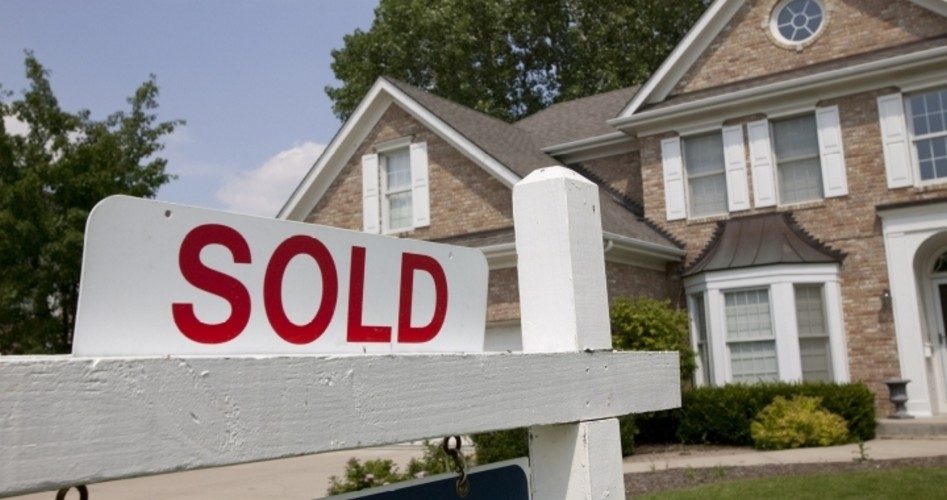
Existing-home sales rose nearly 21 percent in June, the largest gain since Realtors began keeping count in 1968. These make up almost 85 percent of all U.S. home sales.
This follows three months of declines, thanks to the COVID-inspired government-ordered shutdown of the economy. Existing home sales remain about 11 percent below pre-shutdown levels.
The rebound is likely to continue, according to Lawrence Yun, the chief economist at the National Association of Realtors (NAR): “The sales recovery is strong, as buyers were eager to purchase homes and properties that they had been eyeing during the shutdown. This revitalization looks to be sustainable for many months ahead.”
The report from the NAR is only part of the rebound taking place in the housing market. Pending home sales, a leading housing indicator, rose more than 40 percent in May, the highest monthly gain in that indicator since the NAR started tracking that data in 2001. New home sales were up more than 16 percent in May and housing starts jumped more than 17 percent in June — the highest in nearly four years.
It looks to be sustainable. Yun said that “homebuyers considering a move to the suburbs is a growing possibility after a decade of urban downtown revival. Greater work-from-home options and flexibility will likely remain beyond the virus and any forthcoming vaccine.”
Indeed, all the pieces and parts that make up the housing industry appear to be in place for a long sustained rebound. Pent-up demand has been building as young families have been forced to “shelter in place” in apartments. The longer the shutdown lasted, the more they felt the need for larger homes, homes that gave them more breathing room and homes that also allowed more freedom to work from home.
This increasing demand has put a crimp in supply of homes for sale. As one Realtor expressed it, “you can’t buy something that isn’t for sale.” It’s estimated that the shortage is more than a million houses compared to growing demand. This explains why home prices are registering record gains, with the average home now selling for $295,000, up by $10,000 over last month.
Low mortgage rates are helping buyers buy larger homes with larger mortgages too. The 30-year fixed rate mortgage, according to Freddie Mac (the Federal Home Loan Mortgage Corporation, or FHLMC) now averages 2.98 percent, its lowest rate since 1971. Consequently mortgage applications were up 19 percent last week on an annual basis, according to the Mortgage Bankers Association.
First-time buyers are making up more than a third of June’s buyers, and they’re looking for larger homes with room for fitness centers, home offices, and rooms for homeschooling.
There are several reasons to expect the housing industry to continue on its tear. First of all, the number of people planning to buy a home in the next 12 months hasn’t changed at all, despite the COVID shutdown, according to the National Association of Home Builders (NAHB). Second, the labor market, which got slammed during the shutdown, is recovering, with the number of new weekly unemployment claims falling week by week since their April peak.
Higher-income families were less impacted by the shutdown, and they are the ones driving the housing recovery. And more and more people are seeking homes in suburban areas as the need to drive to work in cities and urban areas decreases. According to the real estate brokerage company Redfin, 27 percent of its users searched for homes outside of their metro areas in April and May, an all-time high. And interest in areas with a population of less than 50,000 spiked to 87 percent in May.
There’s more to the housing boom than just the demand for new and existing homes. There’s the pressure to renovate an existing home to retrofit it for the new economy. There’s the desire to splurge on new furniture and appliances. As the housing market makes up nearly 20 percent of the U.S. economy, its healthy recovery bodes well for the economy overall.
Even though the threat exists that some areas of the country will shut down again, the housing industry will not only survive and prosper, but will continue to lead the economy out of the government-imposed recession.
Image: LOUOATES/iStock/Getty Images Plus
An Ivy League graduate and former investment advisor, Bob is a regular contributor to The New American, writing primarily on economics and politics. He can be reached at [email protected].
Related articles:
Trump Touts Deregulation; Economy’s Rebound Shows it
Homebuilders’ Housing Market Index Surge Shows Recovery More Than Just Homes



